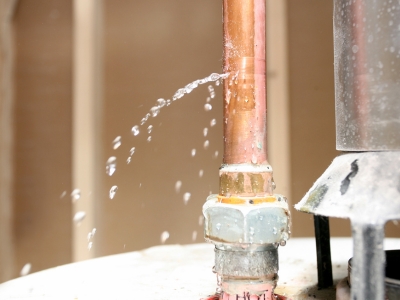Repiping Older Homes
Pipes in old homes are often outdated by today’s standards. These pipes, frequently made from galvanized steel, cast iron, or even lead, can pose a variety of challenges, including corrosion, buildup, and the potential for lead contamination. Corrosion tends to reduce water flow and pressure over time while also risking the pipe’s integrity, leading to leaks or complete failures. So, homeowners with old plumbing are often encouraged to update their systems to modern materials like copper or PVC, which offer improved safety and durability.
Many of the homes and historic properties in Salem are old, and with age can come plumbing problems. One of the most common plumbing problems in older homes is failing pipes that need repiping. Repiping is the process of replacing the pipes throughout a home. This can be a major undertaking, but it’s often necessary to prevent serious plumbing problems in the future.
Repiping in older homes is a crucial procedure that addresses the issues associated with aging plumbing systems. Over time, pipes made from materials such as galvanized steel, iron, and copper can corrode, leading to reduced water quality, leaks, and potentially significant water damage. This post will share some common reasons and signs indicating repiping is needed and the advantages of repiping.
How to Know When to Repipe the Water Lines
 It’s important to be aware of common signs that the pipes may be failing and in need of replacement, especially when living in an old home, including:
It’s important to be aware of common signs that the pipes may be failing and in need of replacement, especially when living in an old home, including:
- Leaks: Frequent water leaks are one of the most common signs of failing pipes.
- Low water pressure: Low water pressure is a common sign of leaks in the water line and can also indicate failing pipes.
- Corrosion: Pipe corrosion is another sign of aging and failing pipes.
- Discolored water: Discolored water can indicate rust or corrosion in the pipes.
Repiping a home becomes necessary when households encounter frequent plumbing issues such as leaks, reduced water pressure, or discolored water caused by corroded pipes. If a home is over 50 years old and has never had its pipes replaced, it’s also time to consider repiping.
If homeowners are experiencing any of these problems, it’s important to have the piping inspected by a plumber. A plumber can determine the best course of action and whether the house needs to be repiped or not.
Advantages of Repiping
Repiping an old home can have numerous benefits for homeowners and their households. It can help reduce the likelihood of costly plumbing repairs and water damage in the future, as new pipes are less likely to fail or experience problems like leaks. Eliminating leaks will also reduce the water bills. Additionally, repiping can improve water quality and water pressure throughout the home, making it more comfortable and convenient for homeowners. Good water pressure eliminates the frustrations of weak showers or trickling faucets.
Repiping can also increase the home’s value, as potential buyers are more likely to be interested in a home with new pipes that won’t give them problems. By investing in repiping, homeowners can enjoy the peace of mind that comes with knowing that their plumbing system is reliable and up to date. Repiping the home can be a significant investment, but it’s an investment that will pay off in the long run.
About Swell Plumbing
Swell Plumbing has been serving the Salem area since 2002. They provide competitive prices, warranty assurance, and the latest equipment and technology. Call them for house repiping services in Salem, OR.

